Books about China
Page 6 (books 101 to 120)
These pages contain my reviews of books about China that have all been read when researching the information on this web site.
Note: many of the links to the books will earn us a small commission from Amazon if you decide to buy the book as we operate as an Amazon Associate.
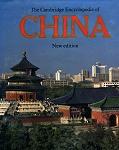
The Cambridge Encyclopedia of China, ed. Brian Hook, Cambridge University Press, 1991
502 pages. ISBN 978-0521355940 Details/purchase ➚
ISBN 978-0521355940 Details/purchase ➚ 





An extensive and heavy book that covers all aspects of China: history, geography, religion, arts and language. Unfortunately it is written by a large number of different 'experts' and the quality is mixed. It can not be used as a standard encyclopedia - you need to read whole sections. The text is 'academic' rather than readable prose and lacks vitality. Because it is written by so many authors there is overlap and no cross references, even so some parts are very valuable, particularly on technology.
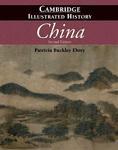
The Cambridge Illustrated History of China, Patricia Embury, Cambridge University Press, 2010
352 pages. ISBN 0-521043519-6 Details/purchase ➚
ISBN 0-521043519-6 Details/purchase ➚ 



Cambridge University Press produce a mammoth in-depth history of China, this can be considered an abridgement of this work. It has copious illustrations and useful panels describing key parts of Chinese culture and history. It covers the whole time period from pre-history to the present day - a lot to cover in one book. It is a fascinating and engaging read and to be recommended as a key overview.

The Chan's Great Continent, Jonathan Spence, Penguin,1998
279 pages. ISBN 978-0140281743 Details/purchase ➚
ISBN 978-0140281743 Details/purchase ➚ 



Jonathan Spence, a leading expert on China, has written many fascinating books about China. They all concentrate on a different aspect of Chinese history. In this one he looks at contacts with foreign countries from the time of Marco Polo to the 1920s. He puts particular emphasis on the attitudes to China which range from wonder to contempt. We forget the times when every great house just had to have a collection of Chinese porcelain; every fine garden was heavily influenced by Chinese taste and design. The book contains many new and entertaining perspectives on how different cultures have both admired and despised each other.

The China Threat, Bill Gertz, Regnery Publishing, 2002
280 pages. ISBN 0-89526-187-1 Details/purchase ➚
ISBN 0-89526-187-1 Details/purchase ➚ 


Sometimes it is important to see things from the other side of the wall. I am, personally, broadly convinced that China has no ambitions for world conquest. This book makes the case that America in particular is in grave danger because China has secret plans to subvert and conquer the United States. No doubt this book sold well to the hawkish elements in America, its sub title could have been 'be afraid, be very afraid'. It is not possible to refute this view all that easily as it is based on so many secret plans and documents. If you want to understand the widespread suspicion about China's motives then you need to read a book such as this.

The Chinese : Portrait of a people, John Fraser, Fontana, 1980
474 pages. ISBN 978-0671448738 Details/purchase ➚
ISBN 978-0671448738 Details/purchase ➚ 


John Fraser is a talented Canadian journalist who traveled extensively in China in the difficult period 1976-79. He takes a very critical eye on the workings of the Communist system at a time of deep suspicion of the motives of Western journalists. He became very much involved in the poster campaigns and unrest in Beijing. A very valuable insight into life in China at the time.
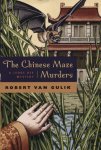
The Chinese Maze Murders: A Judge Dee Mystery, Robert van Gulik, University of Chicago Press, 2012
322 pages. ISBN 978-0226848785 Details/purchase ➚
ISBN 978-0226848785 Details/purchase ➚ 



Robert van Gulik studied the many detective stories that have been popular in China for centuries. Doctor Dee of the Tang dynasty is the best known detective. Here he has combined three separate detective stories into a 'new' Doctor Dee mystery. He writes well with lots of authentic details of Chinese life. In this, his first book in the genre, I found the three separate stories a little confusing and the fact that they were separate crimes solved in order it lacks the impact of stories with a single villain to be caught. It has a good immersive feel with interesting characters.

The Chinese Renaissance, Hu Shi, University of Chicago, 1934
110 pages. ASIN B007T276WM Details/purchase ➚
ASIN B007T276WM Details/purchase ➚ 



There are very few books that cover the Republic of China. This book, based on a series of lectures was written in 1933 and gives a vivid impression of the hopes that the Republican government had for the development of China before the Japanese occupation. It provides a useful window into the mindset of Chinese intellectuals seeking to find a new place for China in the world.

The City of Light, Jacob d'Ancona: translated by David Selbourne, Abacus, 1997
516 pages. ISBN 978-0316639682 Details/purchase ➚
ISBN 978-0316639682 Details/purchase ➚ 



A contentious book, as it claims to be a new find that documents the journey of an Italian Jew to China in 1270 just before Marco Polo's visit. The owner of the manuscript does not allow other scholars to study it, so the authenticity has been disputed. If it is a fake, it is a very elaborate and strange one. The traveler visited Zayton and describes some of the sights he saw. However there is much in the book not about China but the places on the way, so its interest is principally in learning about the traveler himself.

The Civilization Of China, Herbert A. Giles, Bickers and Dagny, 1911
136 pages. ASIN B0084ABT4E Details/purchase ➚
ASIN B0084ABT4E Details/purchase ➚ 



Giles was a pioneer in the study of China in the modern age. After spending 25 years as a diplomat in China he came back to become Professor of Chinese at Cambridge, England. This book surveys the traditions, religion, legal system of ancient China. He does not cover the history in a consistent fashion. Some of his first-hand accounts of games, attitudes to women etc. are not found elsewhere.
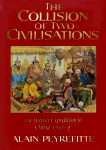
The Collision of Two Civilizations, Alain Peyrefitte, Harvill, 1993
630 pages. ISBN 978-0002726771 Details/purchase ➚
ISBN 978-0002726771 Details/purchase ➚ 


This epic book of over 600 pages covers just five months of Anglo-Chinese history. It recounts the embassy send by the English East India Company to China in 1793. It gathers the personal accounts of many of the key members of Lord Macartney's embassy together with the Chinese Imperial correspondence. The level of detail is probably too much for an average reader but the translation from French is excellent. As the book title suggests it was a 'collision' rather than a friendly chat about trade relations. The lessons of this infamous encounter are still to be fully learned.

The Complete I Ching, Alfred Huang, Inner Traditions, 2004
539 pages. ISBN 978-1594773860 Details/purchase ➚
ISBN 978-1594773860 Details/purchase ➚ 



There are many books to choose from that describe the Yi Jing (I Ching). Huang has written a modern (1998) translation that reads well. He has taken great trouble to understand the true meaning of the guas (hexagrams) and introduces some thought provoking new ideas on interpretation. He succeeds in giving a 'complete' treatment to the subject that is so rich in Chinese cultural traditions.

The Death Of Mao, James Palmer, Faber and Faber, 2012
249 pages. ISBN 978-0571243990 Details/purchase ➚
ISBN 978-0571243990 Details/purchase ➚ 


A misleading title. I thought it would cover the events of 1976 in great detail. However it takes 70 pages to reach that year and then 100 pages describing everything after the event - so there is disappointingly little about the main events. The description of the Tangshan earthquake is well researched however much of the book is an unremitting diatribe against the PRC. Apparently nothing good was ever done and all the leaders were evil. Such a biased viewpoint smacks of a lack of understanding of modern China.

The Death of Woman Wang, Jonathan Spence, Penguin,1978
169 pages. ISBN 0-14-005121-X Details/purchase ➚
ISBN 0-14-005121-X Details/purchase ➚ 



This is one of Jonathan Spence's earlier works. It brings to life the ordinary people of a poor area in Shandong in the mid seventeenth century. It is based on a meticulous trawl through contemporary sources to build up as complete a picture as possible of community life at this time.

The Dragon Empress, Marina Warner, Hamish Hamilton, 1972
247 pages. ASIN B0006C4SLO8 Details/purchase ➚
ASIN B0006C4SLO8 Details/purchase ➚ 


A scholarly and detailed biography of the famous Dowager Empress Cixi. It has an impressive list of references to back up the content. It gives a rather different interpretation to events to that of Jung Chang. She is seen as brutal, insecure and indecisive but battling against the odds. So to give balance you need to read Marina Warner's account to get to grips with this totemic figure.

The Emperor's River, Liam D'Arcy-Brown,Eye Books, 2010
279 pages. ASIN B00ARGHN3E Details/purchase ➚
ASIN B00ARGHN3E Details/purchase ➚ 




More a travelogue than a guide to the Grand Canal, this book documents a modern journey to try to follow the route from Hangzhou to Beijing. He meets many local characters who inject interest into this rather pedestrian book. A set of color illustrations would have greatly added to the enjoyment. The history of the Emperor's River (Grand Canal) is somewhat buried and fragmented. He finds out at first hand that much of the northern section is non-navigable, indeed its route is hard to trace, a fact that the authorities wish to cover up as it is held up as a major Chinese achievement.
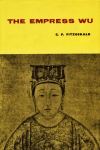
The Empress Wu, C.P. Fitzgerald, Cresset Press, 1968
263 pages. ISBN 978-0248997317 Details/purchase ➚
ISBN 978-0248997317 Details/purchase ➚ 



I was delighted to find this book in a local charity shop. Fitzgerald was a much admired historian of China in the period up to the 1960s. Here he looks in great detail at the life of the great and only Empress of China: Wu Zetian of the early Tang dynasty. Fitzgerald tried to disentangle the myths made up about her after her fall. Using Chinese records of the period Fitzgerald gives a full acount of the many intrigues and revolts at the Imperial court. Wu Zetian comes across as ruthless but shrewd and a much more able administrator than many Emperors. She welcomed and did not punish people with well reasoned arguments aginst her actions but anyone who appeared to lie or defraud faced swift punishment. The ordinary Chinese people do not get much of a mention, but for them it would appear her long period in power was one of peace and prosperity.

The First Chinese Embassy to the West, J.D. Frodsham, Clarendon Press, 1974
222 pages. ISBN 978-0198215554 Details/purchase ➚
ISBN 978-0198215554 Details/purchase ➚ 




There are many books about Westerner's first impressions of China from Marco Polo onwards. How many people have read of the Chinese first impressions of the West? This book has selected extracts from the contrasting diaries of three Chinese who formed the first Embassy to Britain in 1876. A very interesting study of cultural understanding and misunderstanding that ruined the promising career of Guo Songtao.

The First Emperor of China, Frances Wood, Profile Books, 2007
209 pages. ISBN 978-1846680410 Details/purchase ➚
ISBN 978-1846680410 Details/purchase ➚ 


This book is disappointingly short, of the 200 pages, 40 pages are notes. It covers the First Qin Emperor as separate subject areas, with some needless repetition rather than in chronological order. It covers Confucius, the Great Wall, Burning of Books and the Terracotta Army. It lacks a consistent structure and background, the author tends to ramble, but ramble interestingly. There is very little on the actual history of the Qin unification. The last chapter on the Mao Era is poorly connected with the previous text, it has interesting perspectives on Confucius, the Cultural Revolution and Lin Biao but very little on the First Emperor himself.
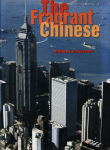
The Fragrant Chinese, Anthony Lawrence, Chinese University Press, 1993
233 pages. ASIN B0032Q50QI Details/purchase ➚
ASIN B0032Q50QI Details/purchase ➚ 



A glossy book about Hong Kong as it was in 1993. This is an in-depth guide to living and working in Hong Kong with many quality photographs. Some useful insights into traditions, history and cultural values but much of it is now rather dated as written before the hand-over to PRC.

The Gate of Heavenly Peace, Jonathan Spence, Penguin, 1982
516 pages. ISBN 978-0140062793 Details/purchase ➚
ISBN 978-0140062793 Details/purchase ➚ 



Jonathan Spence always manages to write on interesting topics and never delivers just another 'standard' history. In this dense volume he covers the period 1895-1980 from the perspective of the reformers, writers and thinkers, with political events as the backdrop. Being a writer in this century was a hazardous profession, adulation was all too often followed by condemnation. The biographies of leading writers such as Kang Youwei, Lu Xun, Ding Ling and Lao She are set out in detail. The many ideas for China's future are explored as well as the changing attitudes to the past. Which approaches seem to win in this continuing struggle is an engaging topic for study.
Key to symbols used in the book descriptions
Note: More up-to-date editions of these books may well exist.
Many books cover more than one topic, these icons reflect all topics it may touch on.